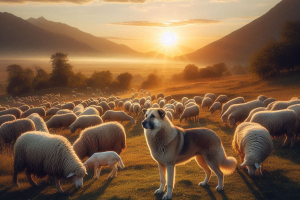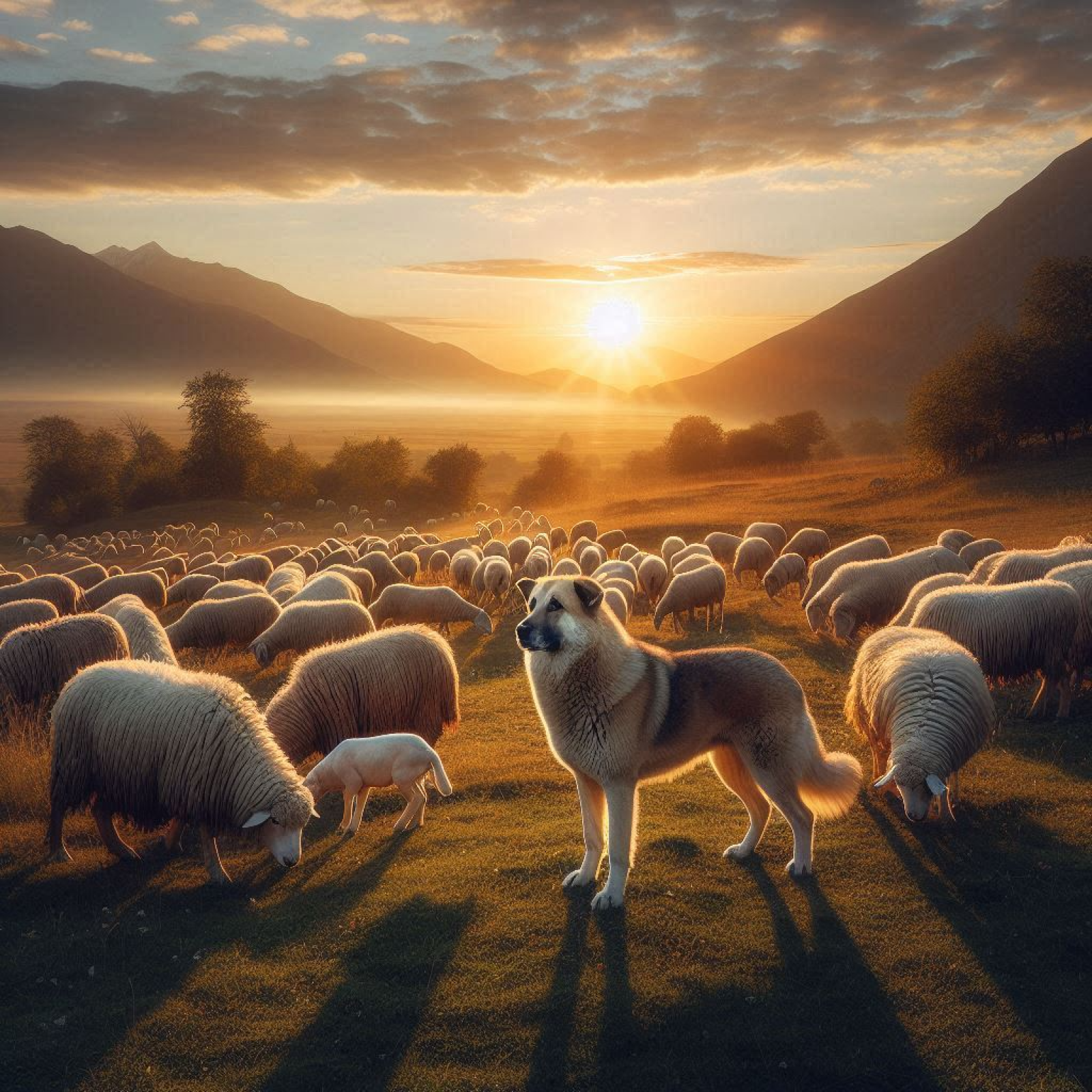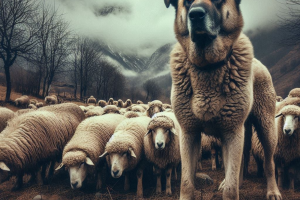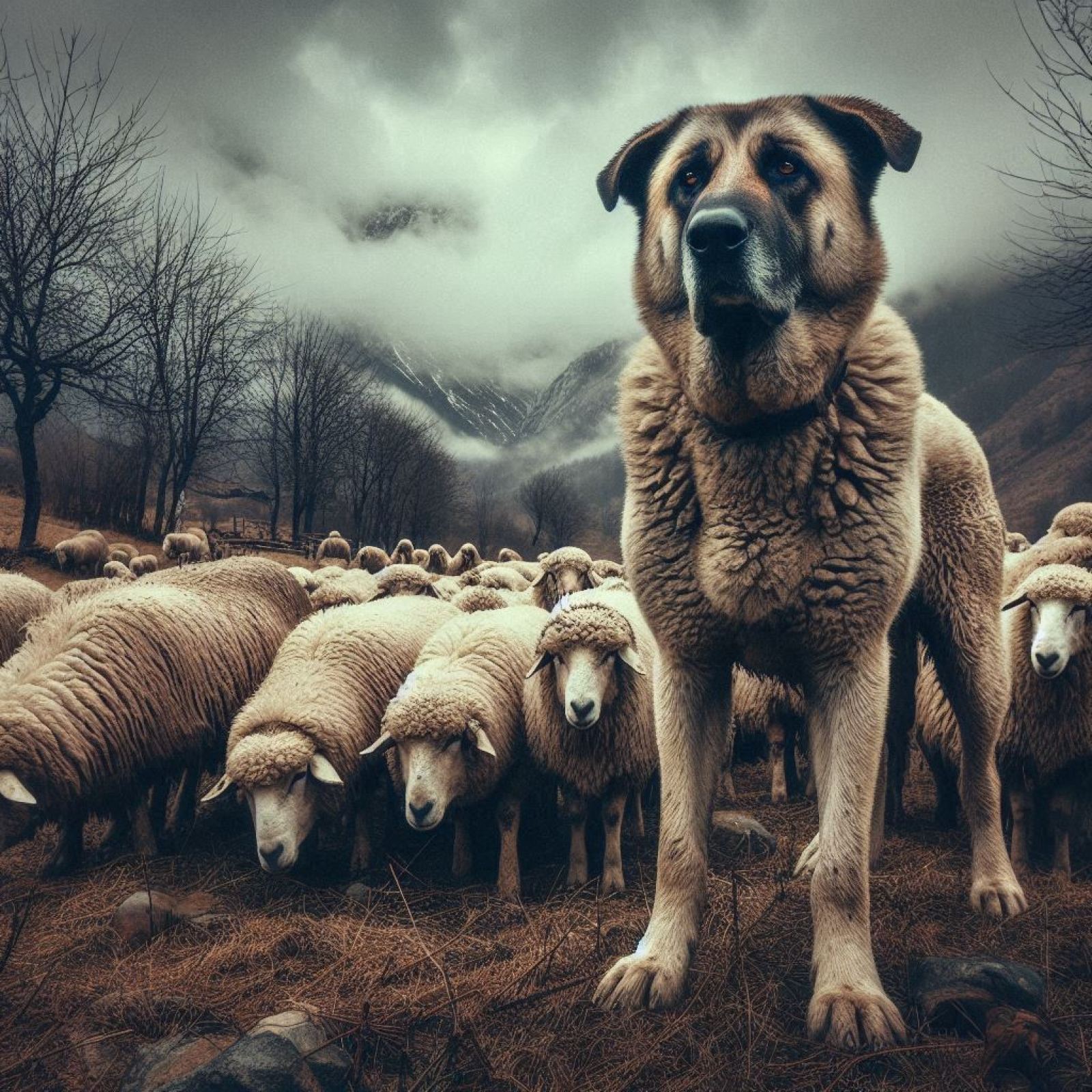Another View of Livestock Guardian Dog History
Ms. de la Cruz makes a good case for another view of LGD history.
Another View of Livestock Guardian Dog History
Catherine de la Cruz ©
(Originally printed in the AKC Gazette, April 1995)
Much written about the Livestock Guardian Dogs (LGD) has assumed that each breed has a separate and unique history. Fanciers of the Kuvasz and Komondor,the Great Pyrenees and Tibetan Mastiff, the Anatolian and the Akbash each claim "special creation" of their chosen breed. Yet the concept of a "breed" as a "pure" race of dogs, each bearing characteristics unique to themselves, is a British invention less than 200 years old. The reality of the Livestock Guardian dog as a genre is nearly six thousand years old.
It is generally accepted that dogs were domesticated during the hunter-gatherer period in human history, about 12,000 years ago and were well established by the time agricultural villages began to form, 6000 years ago inthe Fertile Crescent. According to I.L. Mason's Sheep Breeds of the Mediterranean, sheep were first domesticated in the hills of what is now Turkey, Iraq and Syria. It is probable that the livestock guardian dog began its evolution there as well.
AKC Judge and dog writer Connie Miller - whose final book The Origins of the Dog was left unfinished due to her untimely death - theorized that sheep herders selected their flock guardians from among the general camp dogs. They chose dogs that were close in size to the sheep and who showed weak chase behavior. Like the modern Navajo, they allowed these dogs to whelp and raise their pups among the sheep. The pups grew to regard the flock as their "pack" and preferred to remain with them. Miller theorized that the guardian dogs also served as "totems" of larger predators and their selection for bear-like or lion-like appearance was not accidental.
In a self-published effort to prove the ancient history of the LGD, Edmond Bordeaux, a self-styled expert in Essene philosophy, claimed in Messengers from Ancient Civilization to find definite evidence of Kuvasz in "Sumerian cuneiform" tablets. Analysis of the text by the Columbia University Department of Oriental Languages found no basis either for the claim that the text described the "ku-assa" or the claim that "ku-assa" meant "horse guardian" and could be linguistically glossed into "Kuvasz".
It is true that the Hittites, a horse-breeding, chariot-driving warrior race,ruled the area of modern Turkey, Syria and Iraq for more than a thousand years- about 2000-1000 BC. They easily conquered the pastoral residents of the area. Although the warriors used horses, raised by the ruling class, the common people raised cattle, sheep and goats, planted fields, tended bees and grew fruit. The rulers controlled the trade routes and, like later armies and explorers, found food on-the-hoof easiest to transport and so spread their livestock (and, by inference, their livestock guardian dogs) throughout their empire. Horses have no natural enemies; they are able to outrun wolves and have no need of canine guardians. But the flocks of the pastoral people subjugated by the invaders certainly needed their guardians. As the Hittites expanded their territory and developed trade routes, livestock, grains and ideas were spread throughout their empire and eastward toward India and China.
According to art-work of the period, LGDs with greater degrees of aggressiveness were also used for hunting and as war dogs. The great dogs of Moloch ( Molossus) had already passed into the status of legend by the time the Greeks ruled the civilized Western world. Aristotle wrote "Of the Molossian breed of dogs, such as are employed in the chase are pretty much the same as those elsewhere; but the sheep-dogs of this breed are superior to the others in size, and in the courage with which they face the attacks of wild animals."
The natural color of the wild sheep was black, grey or brown; with managed breeding, spotted, then white animals began to emerge. When water is scarce, it is not likely to be used for dying or even washing wool clothing, so natural dark colors are very practical. However, once the Roman influence spread throughout the Mediterranean basin - where the great river systems provided ample water for both washing and dying, - white wool became a valuable commodity and Imperial decrees both ordered the breeding of white sheep and provided incentives for doing so.
With the prevalence of white sheep probably came the demand for white dogs,which can be selected from fawn and spotted parents. Columella, writing that the flock guardians "should be white lest the shepherd mistake them for a wolf" missed the point. The dogs were white in the belief that this would be less disturbing to the sheep. Color may be either a matter of personal preference, social convention or religious/governmental prescription. In any case, throughout the world, where the majority of the sheep were colored, the dogs were colored; where the sheep were white, so were the dogs.
As trade from Europe, through the Middle East to India and China increased, animals, grain and ideas were transported as readily as gold, spices, frankincense and silk. The "Silk Road" opened Europe to ideas and agriculture from the East. As livestock moved back and forth along the route, it is unlikely that bitches who whelped enroute could be spared time to raise their litters. Newborn pups left with herders along the way supplied new genes for the resident LGD population and except for regional preferences in color and coat texture, the dogs from Spain to Tibet soon resembled each other more than they did either their wild ancestors or the common village mongrels.
In the early 1800's, the British, having begun the development of "pure" breeds of livestock through inbreeding, applied the same principle to their dogs. By the 1850's, they were writing Standards and holding exhibitions. When a new "breed" was proposed, the fanciers of that breed wrote the Standard to fit the dogs they themselves owned. As the custom spread to the Continent, influential fanciers collected groups of dogs, described them in a Standard, and proclaimed the "discovery" of an "ancient breed". National pride often dictated the subtle differences that identified a dog as belonging to one country and not another. Only a serious fancier can readily identify the differences between show specimens of Kuvasz, Tatra, Chuvach, Akbash or Great Pyrenees dogs; the nomadic shepherd didn't care as long as the dog did the work.
When we talk about "preserving" a breed, we are really talking about freezing one point in time - usually the time we ourselves first met our chosen breed. Changes in the direction we want, we call "improvement"; unwanted changes are called "degenerative". In truth, the LGDs have both changed and remained the same for millennia. As sheep-raising continues to decline on a world-wide scale, the opportunity for our dogs to perform their traditional tasks is decreasing. In some areas - Afghanistan and Iran in particular - the regional LGDs may no longer exist. Perhaps in the next millennia, the others will survive only in the hands of fanciers - as companions and family guardians.Throughout it all, the LGDs will continue to do the job for which they were originally bred; only their charges - human rather than ovine - will have changed.
Catherine de la Cruz has been involved with Great Pyrenees since 1957. They provided protection for her sheep for thirty years. A serious student of the Livestock Guardian Dog as a genre, Catherine chairs the Livestock Guardian Dog Committee of the GPCA, holds various offices in the GPC of Calif and writes extensively for breed and sheep publications on the care and training of the Livestock Guardian Dog.
Source: -link-




